On May 27, Tk’emlúps te Secwépemc First Nation announced the discovery of 215 dead children buried in unmarked graves on the site of the Kamloops Residential School in British Columbia. The weeks since have seen an outpouring of grief, and renewed calls for Canada to confront the racist and murderous legacy of residential schools.
In Toronto, protesters recently defaced and then toppled the statue of Egerton Ryerson at Ryerson University’s campus, as he is widely considered an architect of the residential school system. This led to much pearl-clutching from the mainstream media over how we need to respect statues of our supposed forefathers — but it’s hardly the first time we’ve had this discussion in Canada.
So, based on a suggestion from Passage columnist Nora Loreto, I went into the archives and put together a list of columnists at mainstream corporate media publications in Canada who have opposed removing statues of racist historical figures over the years.
I focused on the following newspapers: Globe and Mail, Toronto Star, Toronto Sun, Montreal Gazette, Ottawa Citizen, Vancouver Sun, and National Post. I only included articles from columnists (current or former) or the editorial board, published up until yesterday. I also took an excerpt from all of these articles to give you a feel for how they read. The quotes are followed by the article’s headline, and the publication date in month/day/year format.
I found that at least 33 columnists and three editorial boards have opposed removing these statues (or otherwise written in support of them) over the years. There are far more pro-statue pieces as a whole from these columnists, as I only selected one from each author. (I have, however, noted the number of pro-statue editorials each board has written.) I will, no doubt, have also missed some columnists despite my best efforts.
In compiling this list, I found that these articles tended to contain one or more of the same five arguments. So before I get into the specifics of who argued what and when, here’s a general breakdown of reasons why columnists opposed removing these statues.
Racism Was Normal At The Time
Some columnists argued that we can excuse abhorrent behaviour because it supposedly wasn’t viewed as such when it happened.
However, this ignores that Indigenous peoples in the 19th century, for example, certainly didn’t share the idea that they should be assimilated, and there were some settlers — people who don’t get statues dedicated to them — who opposed the idea too. This argument paints over dissent to create a false idea that there was only one view in the past.
Historical relativism is also a difficult moral position to defend: you always run into something you’re not willing to excuse due to when it happened. (Maybe it’s sexual assault. Maybe it’s torture. Maybe it’s the murder of children. The residential school system involved all of them.)
By excusing support for residential schools as a common by-product of a historical era, columnists are arguing these things can be contextualized in a way that makes them acceptable. They can’t.
People’s Historical Significance Outweighs Their Sins
Some columnists argued that statues are built of people who’ve done important things, and their contribution to history or art or science or politics is more important than the fact that they were also involved in orchestrating mass human suffering.
One version of this argument looks at what statues are celebrating. So, the argument goes, you can draw a distinction between Confederate generals in the United States who are celebrated for “treason” — that’s a bad statue — and Prime Minister John A. Macdonald, who is celebrated for his role in creating Canada and not his anti-Indigenous policies — that’s a good statue.
This is a blatant attempt to plaster over the ugly parts of history. We don’t need politicians to be commemorated. They show up in history books; they don’t need to be in our town squares too.
We Should Keep Statues, But Add New Plaques For Context
This argument from columnists reminds me of newspaper retractions. Say a newspaper prints something false in its front-page headline. It’s bound to apologize, but the apology or correction is often much smaller, tucked into the back of the paper. It doesn’t have to be at the same scale as the original falsity. That’s how it is with statues and plaques. If you have a 10-foot tall statue of Ryerson, and then a one-foot tall plaque explaining his role in creating residential schools, only one of those things is visible from across the street.
There’s More Important Things To Discuss Than Statues
Columnists often argue this in the form of ‘removing statues isn’t a practical step toward reducing inequality.’
That’s well and good, but the people saying it are never the ones advocating for better policies. They’re just pointing to the idea of practical action as something “better” than tearing down statues. It’s classic what-aboutism, bringing in something else and shifting the debate to be about that so the original topic gets ignored.
These columnists also sometimes argue that removing the statues would only be a symbolic gesture to reconciliation, not a real one. But symbols are important. Statues are symbols. They are shorthand for what is deemed important or worthy of remembering. Leaving these statues up is also a symbolic act: it symbolizes that these are people worth their place in the public sphere.
You can advance both practical and symbolic plans; taking down statues doesn’t preclude us from advocating for equity. There’s nobody who seriously thinks statue-toppling is the entirety of reconciliation work. It’s just one piece of a larger action plan.
Critiquing Statues Of Canadian Icons Is Critiquing Canada
Yes. That’s the point.
Now, as promised, here are excerpts of articles from columnists at seven major Canadian publications defending these statues in some form. If you’d like to jump to a particular publication you can use these anchor links: Globe and Mail | Toronto Star | Toronto Sun | Montreal Gazette | Ottawa Citizen | Vancouver Sun | National Post.
Globe and Mail
Editorial Board (4: 2017, Aug. 2018, Sept. 2018, 2020): “No good can come from whitewashing history, or burying wrongs done. But Macdonald, flawed though he was, laid the foundation for something that is fundamental to our lives, namely this country itself. It’s an accomplishment so big that it tends to get overlooked. That is why a debate over a Macdonald statue should be very different from the American debate over statues of the leaders of the Confederacy […] On the whole, it seems wiser to add to Canadian history than to get into arguments over how to subtract from it.” — Sir John A. Macdonald shouldn’t be worshipped – or cancelled. In the country he created, there’s always a middle way (9/8/2020)
Margaret Wente: “Personally, I’m more disturbed by the growing movement on the left that sees symbols of oppression in every public monument and racists under every bed. I agree with the civil-rights leader Andrew Young, who told The New York Times that battles over symbols make more enemies than friends. We need to work to build a better future and stop wasting time tearing down the past.” — I’ve had it with the monument wars (8/28/2017)
Marcus Gee: “It seems wrong, at a time when we are all taking a hard look at racial prejudice, past and present, to continue glorifying those who have been linked to that evil. But it seems dubious, as well, to rub out the memory of leading historical figures, even if they had attitudes that are repugnant to us now. John A. Macdonald himself has come under scrutiny for his views on Indigenous peoples.” — Don’t erase street names and tear down statues (7/17/2020)
Toronto Star
Editorial Board (3: 2017, 2018, 2020): “In Toronto, for example, city council is about to launch an examination of streets, parks and monuments named after problematic individuals from the past, starting with Henry Dundas who gave his name to the street and square, but has been accused of delaying the abolition of slavery in the British Empire. The goal, says the man behind the move, is nothing less than a ‘re-examination of how we engage with public memory.’ That’s ambitious, even daunting, but it could lead us to a better place. Simply tearing down street signs would be quicker, but it would fail as a way to achieve meaningful change.” — Justin Trudeau is right: vandalizing statues isn’t the right way to press for change (8/31/2020)
Ian Urquhart: “Flanking the top of the main walk up to the [legislative] building, statues of George Brown, a Father of Confederation, and James Whitney, Ontario’s sixth premier (1905-14). At the southern tip, a statue of John A. Macdonald, Canada’s first prime minister. There is nothing wrong with any of these. All are suitable (although I would have preferred Robert Baldwin to Mackenzie as a personification of responsible government); all, with the possible exception of King Edward, represent significant moments in our history.” — Time to update heritage assets (6/30/2003)
Rosie DiManno: “The sins of half a millennia ago – a time of Empire and expansion triggered, mostly, by avaricious thirst for trade – can’t be judged retroactively. Our predecessors couldn’t have seen how the world would shift within a century and a half. Just as we, if erecting memorials to contemporary icons, have no idea whether they will still be considered admirable and virtuous a century from now, if they’ll stand the test of time standing on their plinths. […] A year ago it was transgender rights and washrooms. (For the record, in this corner’s opinion, transgender people should use whichever bog suits their gender identity.) Then we were into pronouns warfare. Now it’s monuments and building names, striking out even a Father of Confederation, Sir John A. Macdonald, from the names of public schools if the pinheads at the Elementary Teachers’ Federation of Ontario gets their way.” — Our statue grievances show we’re getting out of control (9/5/2017)
Rick Anderson: “There are two key reasons not to use the residential schools tragedy as an opportunity to vilify John A. Macdonald. First, it does nothing to further the noble goals of either truth or reconciliation to lay this disaster at the feet of one person. In fact, it achieves the opposite: it obscures the enormity of the wrong path Canada went down – and continued on for more than a century. Second, residential schools form only a part of Macdonald’s story and of Canada’s history. For our understanding of history to be complete, we must take the bad with the good.” — Should statues of John A. Macdonald be removed? No (8/20/2018)
Toronto Sun
Editorial Board (5: 2017, 2018, 2019, 2020, 2021): “There is no need to gloss over the past. Nor is there anything wrong with condemning Macdonald and his contemporaries for their words and actions. What is wrong is ignore [sic] the context of history and the full contributions of historical figures. Because there are few who from history who [sic] would meet today’s moral and ethical standards. And burying the past does not change it. Progress requires understanding the past, with recognizing the accomplishment, failings and context of different times.” — Removing Sir John A’s statue doesn’t change past (8/15/2018)
Tarek Fatah: “On Saturday the city of Victoria removed the bronze statue of the founder of Canada, Sir John A. as he is fondly remembered across the country. For all his faults as our first prime minister, Sir John A. Macdonald literally carved out a country out of a territory, but he was cast aside in a dustbin of history with not a word of outrage from any MP or Minister, let alone the Prime Minister who occupies the institution our first prime minister created.”— Canada has no space for Sir John A., but plenty for Jinnah (8/15/2018)
Candice Malcolm: “A small handful of activists act like they hate Canada, and the very fact that Macdonald was the Father of Confederation – founding this great country of ours – upsets those who wish Canada did not exist. […] And while Canada’s experiment with residential schools now casts a dark shadow over our history, at the time, the initiatives received broad public support.” — Canada has a proud history worth defending (8/15/2018)
Mark Bonokoski: “The Elementary School Teachers of Ontario decided to be the grand beacon of enlightenment, and voted to remove Macdonald’s name from all public schools in the province because of his support for the indigenous child grab. Virtually every leading figure at the time supported the residential-school experiment, so there is a lot of whitewashing to do if all the progressives and like-minded revisionists want to vilify them all.” — Canadians growing tired of kicking Sir John A. to racist curb (9/7/2018)
Jerry Agar: “The message is clear. The only two sides of a debate now are right and wrong. And wrong must be eliminated along with history. Toppling statues and ideas are one and the same.” — Society is right now wound so tight, always ready to snap (7/27/2020)
Anthony Furey: “I find it very hard to believe that anyone other than a small faction of troubled extremists who wield disproportionate influence because of their loud and obnoxious online presence really want to see statues of Sir John A. get torn down. It’s time to stop giving these extremists so much attention and start giving more air time to the moderate voices we can all get behind.” — It’s time to take the narrative back from all these far-left extremists (8/31/2020)
Lorne Gunter: “Pulling down statues is anti-democratic. It is protesters taking the law into their own hands, plain and simple. Without due process – whether through legislatures or courts – no group of people has the right to impose by force its preferred view of history or justice on everyone else.” — The big problem with mobs tearing down statues (9/1/2020)
Joe Warmington: “They are erasing the memory of founding father Sir John A. Macdonald and no one is stopping them. […] At Queen’s Park, the statue remains hidden by boarding and a tarp after being vandalized in July. They also took him off the $10 bill as haters selectively pieced together words from 150 years ago when times and people were different. They won’t stop if no one stands up to them.” — Sir John A. Macdonald left alone to be erased (10/20/2020)
Lorrie Goldstein: “Justin Trudeau and the Liberals have encouraged the mentality of people who believe in cancelling out the past. While Trudeau criticized demonstrators in Montreal who last summer toppled and beheaded a statue of Canada’s first prime minister, Sir John A. Macdonald, for his treatment of Indigenous Canadians, he also removed the name of Sir Hector-Louis Langevin from the building that houses the Prime Minister’s Office because of his role in developing residential schools. But once you start, where do you stop?” — Cancel culture comes for Pierre Elliott Trudeau (3/5/2021)
Brian Lilley: “The outrage over the discovery of the remains of 215 children at the former Kamloops Indian Residential School is palpable and understandable. The desire by some to channel that anger by tearing down names, statues and buildings is the wrong path. We are being asked to vandalize our history in order to atone for past sins, it’s something that has been tried in other countries in the past and never worked.” — Looking hard at history, not erasing it, is how we honour the memory of the 215 (6/3/2021)
Sue-Ann Levy: “I found it appalling that a group of anarchists felt the need – following a rally – to yank down the already defaced statue of Ryerson on the grounds of Ryerson University, remove his head, block traffic and subsequently toss the statue’s head in Lake Ontario. […] But Ryerson died 139 years ago after leaving a tremendous mark on education. He created public schools, school boards, uniform school textbooks and libraries in schools in addition to the template for residential schools. We can’t simply erase his other accomplishments.” — Defacing and beheading statues accomplishes nothing (6/7/2021)
Montreal Gazette
Don Macpherson: “Removing place names or monuments honouring historical figures now considered less honourable to some Museum of the Disgraced amounts to whitewashing our history, covering up the tarnished past we need to see to fully understand the present. Paradoxically, the prominence of the Macdonald monument serves the cause of those protesting against it, providing opportunities to educate the general public about the legacy of Macdonald’s policies that affects Indigenous people to this day.” — Lionel Groulx, Sir John A. Macdonald and our history (8/21/2020)
Lise Ravary: “I understand that a prestigious memorial in downtown Montreal to a man who built Canada on the backs of francophones, Métis and Indigenous peoples hurts and angers many. If a majority would like to see it removed, so be it. I would prefer to keep it, with a rigorously accurate historical note next to it. Such a controversial historical figure needs to be contextualized, not demonized and turned into nuclear fuel for anarchism.” — Toppling statues won’t change a thing (8/31/2020)
Allison Hanes: “Jettisoning our history on a whim is dangerous, and more likely to make us forget past failings than learn from them. However, this unfortunate event should make us realize that there is much hard, painful work to be done to address historical scourges that remain a daily reality for far too many.” — Are we more concerned about a statue than lives? (9/1/2020)
Ottawa Citizen
Robert Sibley: “I take my lunch with John A. Macdonald, Canada’s first prime minister, sitting in the shade of a maple tree near his statue on the northeast corner of the Hill, between the Centre Block and the East Block […] It is a splendid statue, capturing Macdonald’s spiritedness and quickness of mind. The sculptor, Louis-Philippe Hébert, depicts him in a meditative pose, papers in one hand, glasses in another, head turned to one side as if paused in thought. Perhaps he’s wondering whether Confederation will work for any length of time.” — Hail to The Chief (7/28/2009)
Vancouver Sun
Daphne Bramham: “Everything won’t suddenly be OK if we tear down statues and monuments, rename streets and schools, or even make apologies and payments to those who have suffered in the past. It’s not like we can erase history, any more than we can pretend that humans are anything but flawed […] Does Macdonald not deserve at least as much credit and respect for his considerable accomplishments as scorn for his failings?” — Searching for ways to celebrate our flawed, all-too-human history (8/10/2018)
Vaughn Palmer: “Wherever the [John A. Macdonald] statue ends up, what happened Saturday was a comment on today’s politics more than anything that happened in Macdonald’s time. The country is his monument, and will remain so long after Mayor Helps and the other pipsqueaks on Victoria council are forgotten.” — Macdonald will be remembered long after Mayor Helps and other council pipsqueaks (8/14/2018)
Douglas Todd: “Instead of demonstrators beheading a statue of Macdonald in Montreal in August, or Victoria City council surreptitiously removing another statue of him in 2018, [sculptor Timothy] Schmalz asks us to imagine erecting the Monument of Oppression adjacent to a likeness of Canada’s first prime minister, ‘with the hands going through the bars and reaching toward the statue.’ That, Schmalz suggests, is a more productive way of dealing with the multi-edged legacy of Macdonald, a dynamic Scotsman who both created the vision for the nation of Canada but also supported establishing residential schools dedicated in part to ‘Christianizing’ Indigenous people.” — Renowned sculptor touts ‘shock’ rebuttal to, not destruction of, historical statues (9/10/2020)
National Post
Conrad Black: “Almost everyone in this country, including all the political parties, wants to make a great effort to right wrongs and help raise the standard of living and general morale of the native people. None of that is disputed by any serious person, but in taking that position, we have invited our collective indictment for crimes our ancestors did not commit […] Macdonald’s role in the Great Plains famine deserves and has received scrutiny but neither he nor any other prime minister or collaborator or associate of any Canadian prime minister ever attempted to destroy native people.” — Canada admirably respects other cultures, but we are achingly slow to defend our own (3/18/2016)
John Ivison: “Macdonald was embedded in his time and his views were, if anything, more moderate than those of his political opponents. He worked to give the federal franchise to all adult male Indians in central and eastern Canada with the necessary property qualifications […] History exists in context and Macdonald’s 47-year legislative career cannot be reduced to a single quote or act.” — Even John A. Macdonald isn’t safe from a foolish revisionism that never ends (8/24/2017)
Jonathan Kay: “Councillors in Victoria are mulling the fate of a Macdonald statue outside city hall. The issue is purely symbolic. But symbols are the binding agents that hold nations together. Macdonald was the founder of our political order. To blacklist him as a génocidaire is to reject the very idea of a Canadian project. Historical revisionism of this type easily morphs into a sort of social panic among intellectuals, whereby any form of patriotism is stigmatized as thought-crime, with pride in country cast as pride in ethnic cleansing.” — How the original sin of white racism is fuelling radicalism on the left — and the right (8/31/2017)
Barbara Kay: “Here we tear down statues of dead public figures who retroactively fail today’s tests for social-justice purity.” — We’ve forgotten how bad Communism was. Identity politics reminds us (5/8/2018)
Colby Cosh: “Even if Victoria took a year with this decision, a year is not a long time to reconsider an act of commemoration that was intended to be permanent in the first place. Any one generation, let alone a small group within it, ought to be hesitant in removing public statuary.” — Smash ‘em up: the pros and cons of political iconoclasm (8/10/2018)
Terry Glavin: “It is hard to find anything particularly objectionable, per se, in the specific content and purpose of the ‘City Family’ decision to sequester the statue. It is definitely about rewriting history, as Helps conceded, but the intent is ‘rewriting history in a really conscious and collaborative way,’ and it’s hard to find any fault with that. It’s still odd, though, that after a full year of engaging in ‘Indigenous-focused’ deliberations about how to proceed along this journey of reconciliation, the result is a wholly unoriginal and rather faddish idea: Let’s remove a statue. Maybe ritualized, symbolic gestures of this type are mere substitutions for the far heavier lifting that would be required to address the poverty and disaffection that continues to disproportionately afflict the Songhees and Esquimalt communities.” — How it took a ‘City Family’ to remove a statue of Sir John A (8/15/2018)
Kelly McParland: “I’m willing to bet Canadian campaigners are even now girding to relaunch their crusade against Sir John A. Macdonald for holding values common to his time. If that’s the case, he’ll serve as collateral damage in a larger shift of public awareness that has come to treat history as a current event.” — Don’t lose the stories, even if we lose the statues (6/11/2020)
Raymond J. de Souza: “How do we evaluate the record of former prime minister John A. Macdonald? What does his statue in Kingston, Ont., for example, celebrate? […] For the 50th anniversary of declaration of martial law during the FLQ crisis this October, should the prime minister remove his father’s name from the airport in Montreal? I would think not, because when Prime Minister Jean Chrétien gave Trudeau airport its name, it was not to honour the suspension of civil liberties, but to honour Prime Minister Pierre Trudeau’s larger contributions to the country and national unity. The same man can do many things.” — Which statues should fall? (7/10/2020)
Josephine Mathias: “Don’t get rid of these monuments. Find a better use for them either in public with qualifying statements or even in a museum, which should be free for everyone to visit. The goal should be to educate, not erase, and more importantly, the fate of these statues is something we should decide together as a community, not by fringe mobs and vigilante justice.” — Vandalism doesn’t save Black lives or promote reconciliation (7/24/2020)
Rex Murphy: “Here’s a couple of thoughts. If you do not like a representation of some historical Canadian figure, that does not entitle you, or your friends, to tear it down. Other Canadians may like it and want to see it stay, and those other Canadians are likely more numerous, and certainly have better manners.” — Vandalism is not protest (9/1/2020)
Chris Selley: “There is widespread agreement in Canadian politics that the toppling of Sir John A. Macdonald’s statue in Montreal on Saturday was not a good thing […] The widespread disapproval among Upper and Lower Canadians alike is in large part due to a shared dislike of incivility and extremism.” — Toppling of John A. gives Erin O’Toole a shot to finally woo Quebecers (9/2/2020)
UPDATE: This list has been updated to remove an article by Randy Boswell, as its argument doesn’t meet the requirements for inclusion. Passage regrets this error.


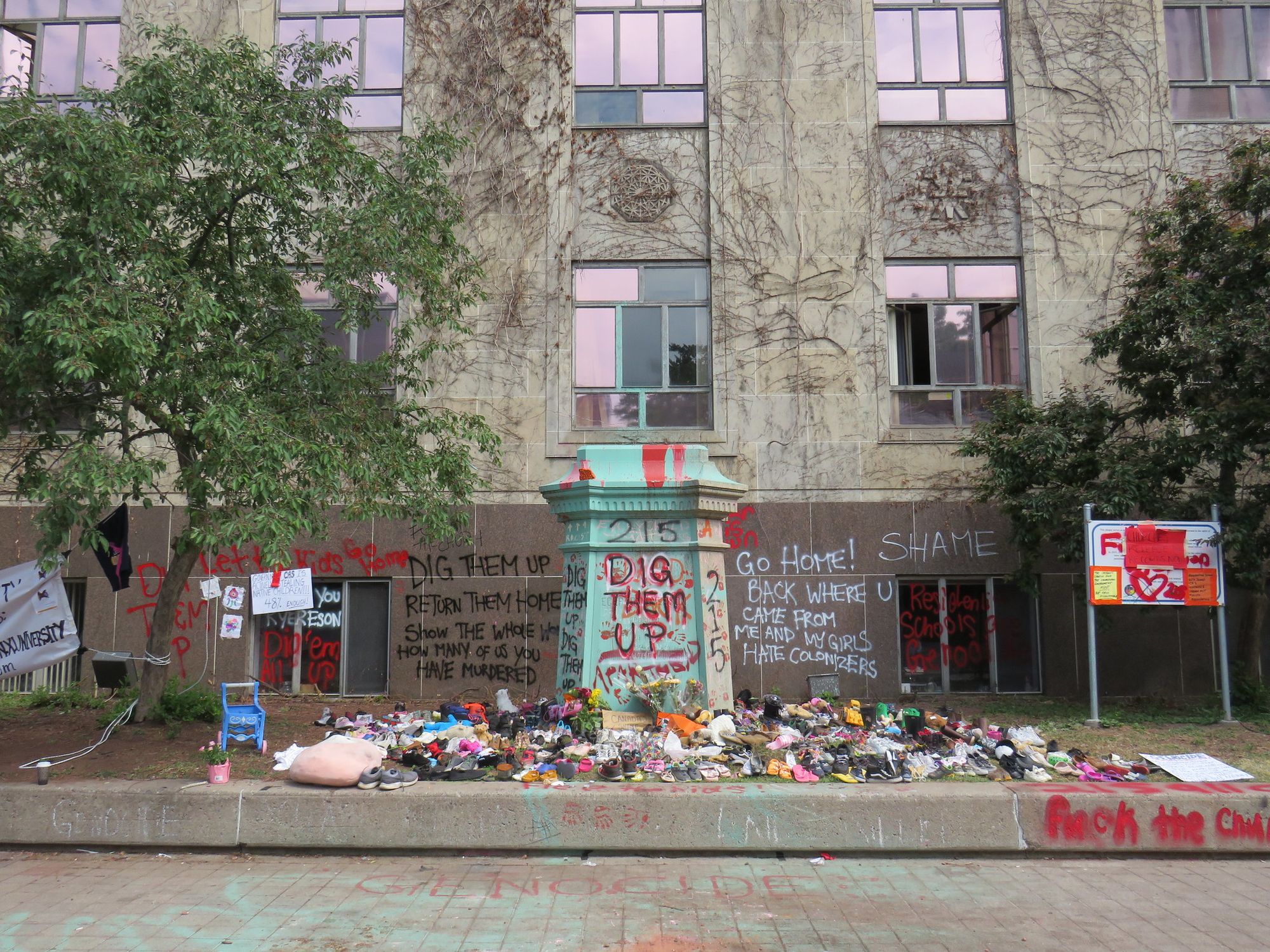
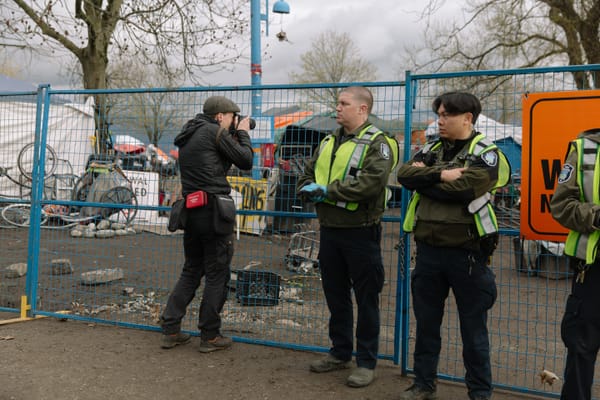
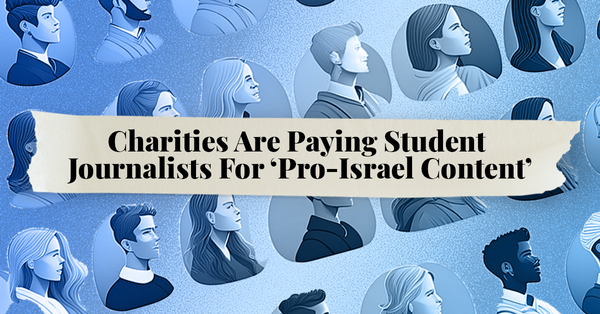

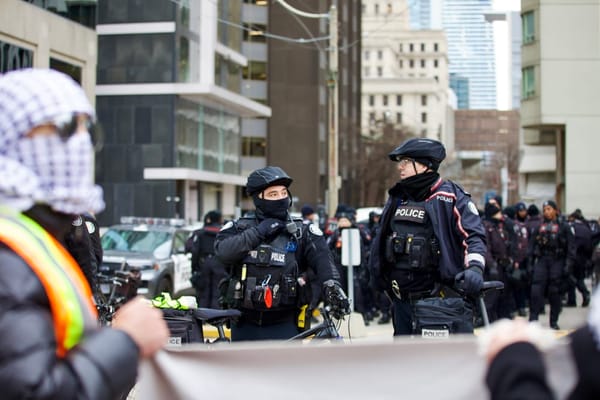
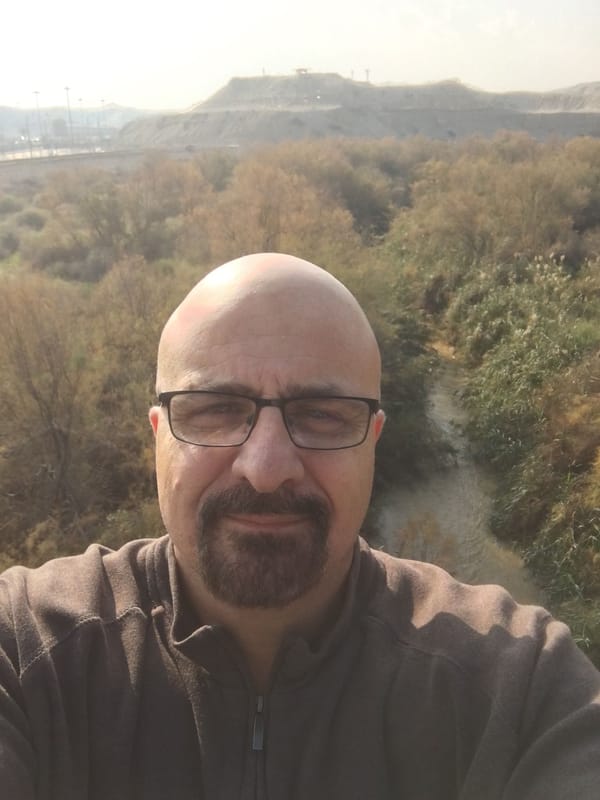
Member discussion